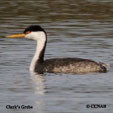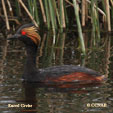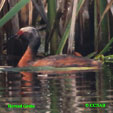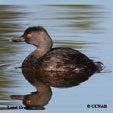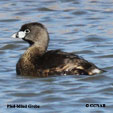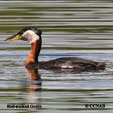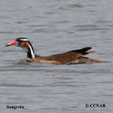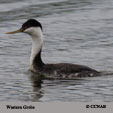Field Guide for all the Birds of North America
Grebes
Grèbes
Podicipedidae
Information, images and range maps on over 1,000 birds of North America, including sub-species, vagrants, introduced birds and possibilities
North American Bird Search Box
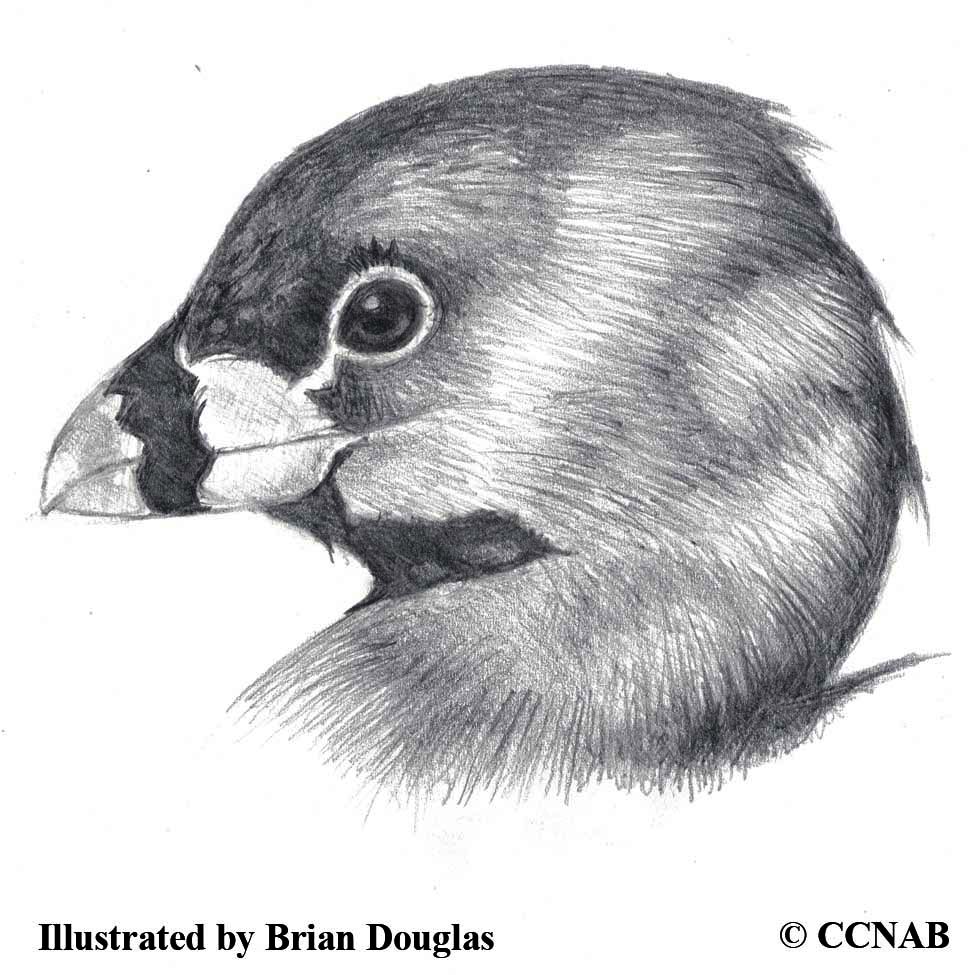
The grebes are different from other waterfowl such as swans, geese, ducks and loons, because they have lobed toes. These birds are divers who use their wings to propel themselves under water in order to get their food. Similar to loons, they are more able to swim in water than they are to walk on land. This is because their legs are farther back on their bodies than most waterfowl and it is very difficult for them to walk.
There are seven types of grebes found in North America.
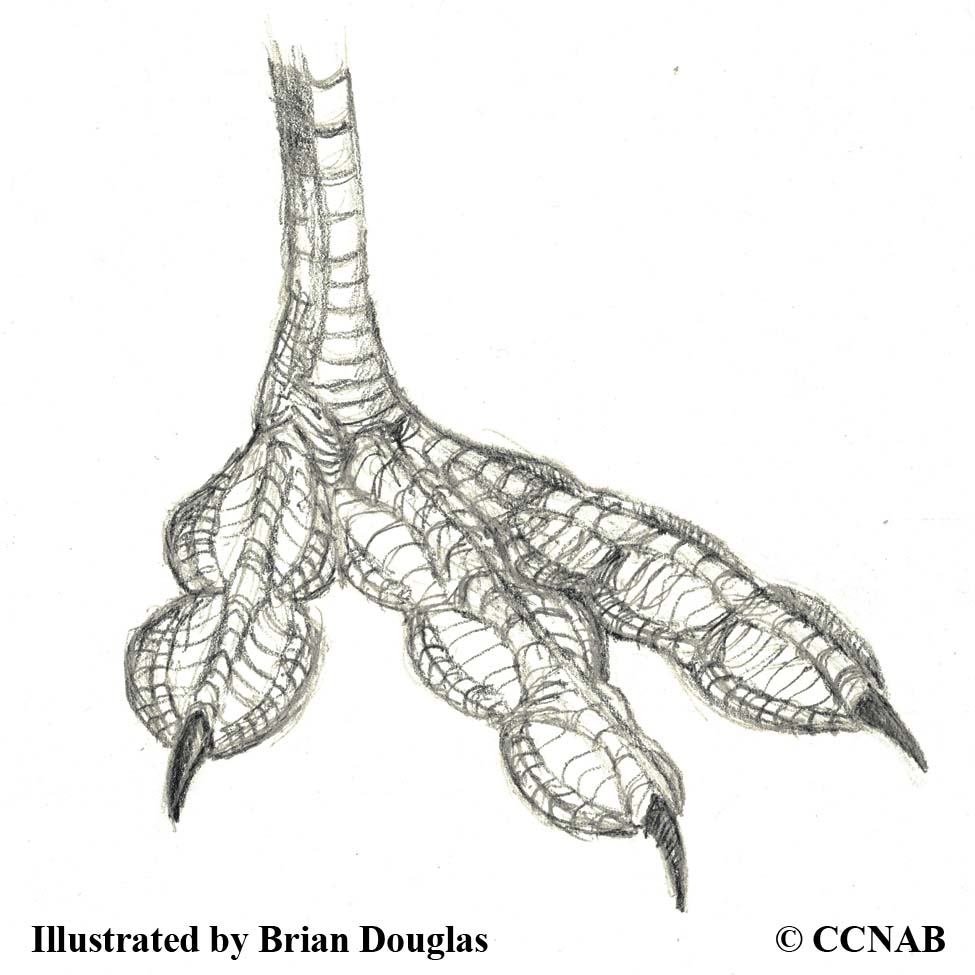 The Horned Grebe and Pied-billed Grebe have the widest ranges. These birds are
more likely to be seen from the central parts of the continent into the more western regions. The Least Grebe is the smallest in
the family and lives in the most southerly regions of the United States and into Mexico. The Clark's Grebe, Western Grebe,
Eared Grebe and the Red-necked Grebe are found in the western regions.
The Horned Grebe and Pied-billed Grebe have the widest ranges. These birds are
more likely to be seen from the central parts of the continent into the more western regions. The Least Grebe is the smallest in
the family and lives in the most southerly regions of the United States and into Mexico. The Clark's Grebe, Western Grebe,
Eared Grebe and the Red-necked Grebe are found in the western regions.
Reference to Other Bird Site:
ABA - American Birding Association This site represents an organization that maintains official records of all birds species that have been proven to have been seen inside the perimeters of the North American Continent and the surrounding bodies of water. Regular revised versions are posted to keep the bird list current at all times. This is the list used by all serious birders over their lifetime. You may be aware of the movie called the "Big Year". It was with this list that all the competing birders used in an attempt to set a new record as to how many bird species that could be seen by an individual birder in one calendar year.
